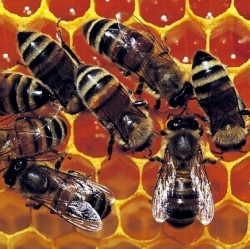
A computerized system that allows for autonomous navigation of mobile robots based on the locust’s unique visual system has been created by scientists from the University of Lincoln and Newcastle University.
The work could provide the blueprint for the development of highly accurate vehicle collision sensors, surveillance technology, and even aid video game programming, according to the researchers.
Locusts have a distinctive way of processing information through electrical and chemical signals, giving them an extremely fast and accurate warning system for impending collisions.
Professor Shigang Yue from the University of Lincoln’s School of Computer Science and Dr. Claire Rind from Newcastle University’s Institute of Neuroscience were inspired by the powerful visual processing power built into these insects’ biology.
The research started by understanding the anatomy, responses and development of the circuits in the locust brain that allow it to detect approaching objects and avoid them when in flight or on the ground.
A visually stimulated motor control (VSMC) system was then created, which consists of two movement detector types and a simple motor command generator. Each detector processes images and extracts relevant visual clues which are then converted into motor commands.
A collision-avoidance system for autonomous vehicles
“We created a system inspired by the locusts’ motion sensitive interneuron — the lobula giant movement detector (LGMD),” said Yue. “This system was then used in a robot to enable it to explore paths or interact with objects, effectively using visual input only.”
Funded by the European Union’s Seventh Framework Program (FP7), the research was carried out as part of a collaborative project with the University of Hamburg in Germany and Tsinghua University and Xi’an Jiaotong University, China.
The primary objective of the project is to build international capacity and cooperation in the field of biologically inspired visual neural systems.
